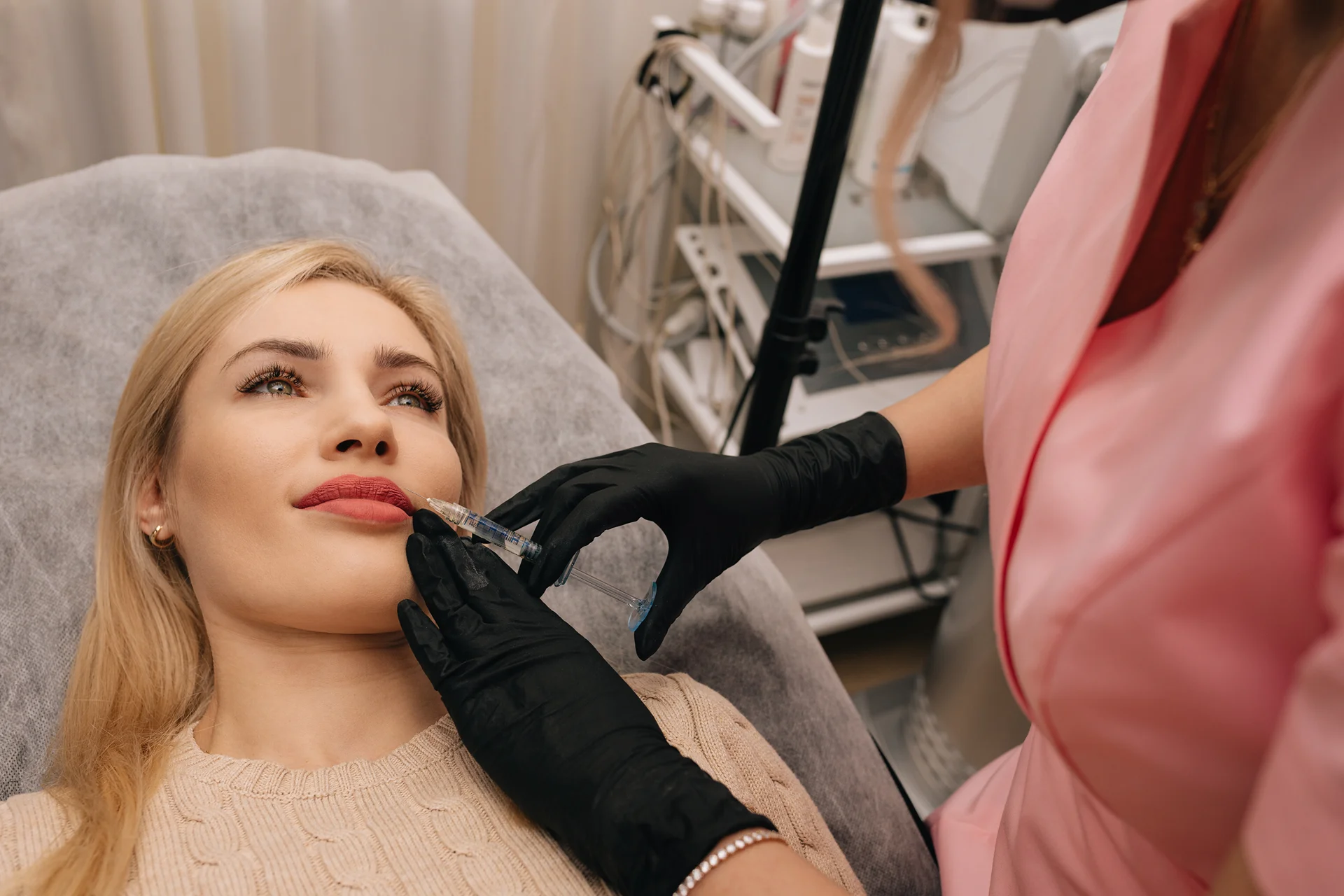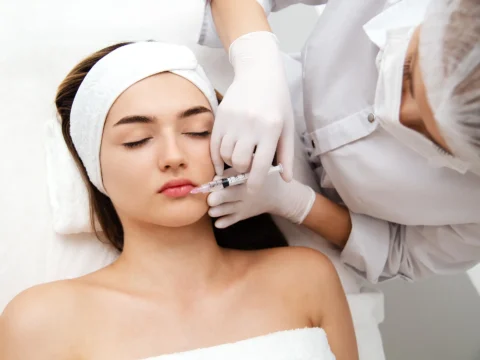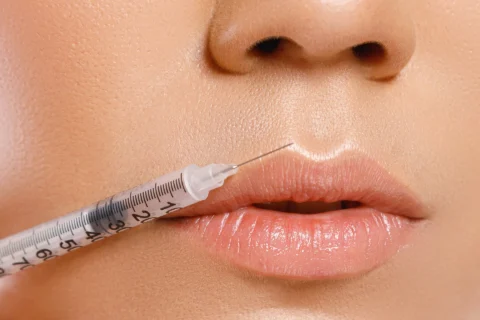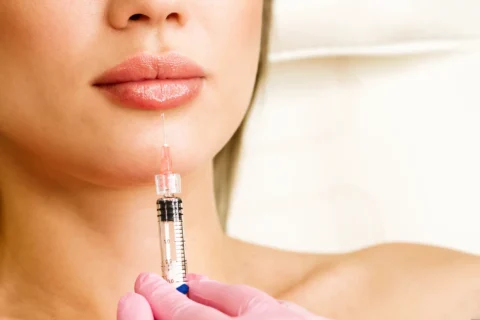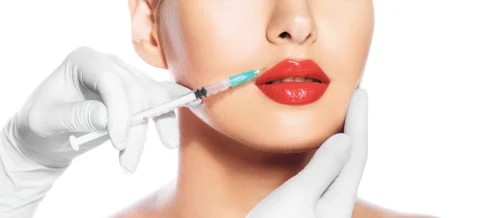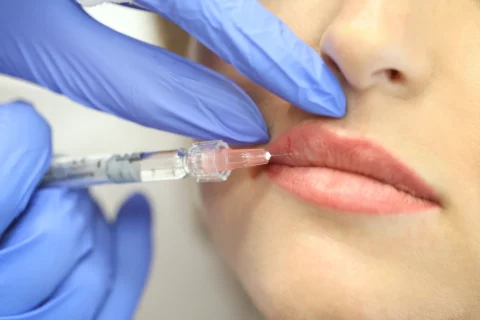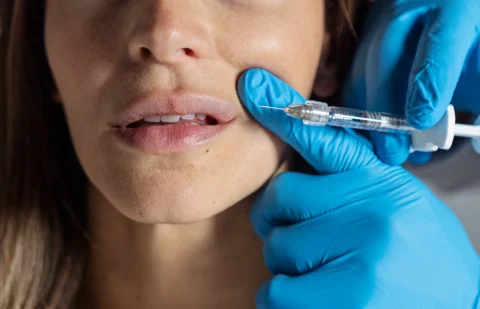Ensuring Comfort and Precision in Lip Augmentation
Have you ever wondered how to get fuller lips without pain? As lip fillers rise in popularity, minimizing discomfort during treatment is key. A dental block provides selective numbing for a smoother procedure. Anesthetizing nerves that innervate the lip area, allows practitioners to sculpt lips with precision while keeping patients at ease.
This guide explores how dental blocks enhance the lip filler experience from start to finish.
Understanding the Basics
Dermal fillers are gel-like substances injected beneath the skin to restore lost volume, smooth lines, and creases, or enhance facial contours. They are a popular nonsurgical procedure used to plump wrinkles, and smooth lines, and restore volume in the face. Dermal fillers can contain naturally occurring substances like hyaluronic acid or synthetic materials such as calcium hydroxylapatite and polylactic acid.
Types of Dermal Fillers
There are several types of dermal fillers, each with a unique formulation, texture, and density making some better suited for specific concerns.
| Dermal Filler | Description |
| Hyaluronic acid | One of the most common fillers as it is a natural component of skin tissue. It can plump lips, enhance shallow areas, and soften creases with results typically lasting 6-12 months. |
| Calcium hydroxylapatite | Mineral-like and often used for jawline contouring or cheek restoration, providing volume for up to a year when contouring or 3 years for wrinkles. |
| Poly-L-lactic acid | Stimulates collagen to treat deeper wrinkles for up to 2 years while PMMA addresses deep lines and folds semi-permanently for around 5 years. |
| Autologous fat injections | Involves fat transfer but can yield more long-lasting volume restoration than other options at the cost of increased invasiveness. |
The Lip Augmentation Process
1. Consultation
The lip augmentation process typically begins with an extensive consultation where the practitioner evaluates your goals, lip shape, symmetry, and facial balance through pictures. This allows the creation of a customized treatment plan.
Goals like contour cheeks may be addressed through strategic filler placement during injections, as well as gummy smile reduction by augmenting the upper lip edge.
2. Numbing
A topical anesthetic cream is applied containing agents like benzocaine, lidocaine, and tetracaine to numb the lips. This numbing process reduces any discomfort during injections.
3. Injection
Once numb, the practitioner uses a very thin needle to carefully place about 1mL of filler into strategic areas to enhance shape. Injections target the vermillion border, Cupid’s bow region, and oral commissures to build up definition and fullness.
The filler is deposited in thin ropes and massaged evenly. This sculpting process continues incrementally until optimal pout and balance are achieved. Between deposits, the practitioner may assess results and make subtle adjustments.
4. Massage
After the injection stages, a final massage incorporates the filler homogeneously for smooth, natural-looking curvature and symmetry. Any minor swelling generally subsides within a few days, revealing subtly shapelier lips. Additional touch-up sessions allow for fine-tuning over the filler’s duration.
The Role of Anesthesia in Lip Filler Procedures
During a lip filler procedure, anesthesia is used to ensure patient comfort and pain management options. The primary function of anesthesia is pain control.
Types of Anesthesia
There are several types of anesthesia used during lip filler procedures. These include:
| Type | Description |
| Topical anesthesia | Numbing cream is applied to the lips to numb them and make the process as comfortable as possible. The numbing creams often consist of benzocaine, lidocaine, and tetracaine (BLT). |
| Vibration anesthesia | Comfort is created by vibration devices that can reduce the pain of lip filler procedures with vibrations. |
| Local anesthesia | Injection of a small amount of lidocaine into the lips to numb them. Lidocaine is the most common anesthetic agent used for lip fillers, and it has a relatively fast onset time of approximately 3-5 minutes. |
| Regional anesthesia | Blocking a specific nerve or group of nerves to numb a larger area of the face. |
Benefits of Anesthesia
The benefits of anesthesia are multifold, including:
- Patient comfort: Anesthesia helps to reduce pain and discomfort during the procedure, making it a more comfortable experience for the patient.
- Pain management options: Anesthesia provides different options for pain management, including topical anesthesia, vibration anesthesia, local anesthesia, and regional anesthesia.
- Ensuring a comfortable lip filler treatment: Anesthesia ensures that the patient is comfortable during the procedure, which can help to ensure a more successful and comfortable lip filler treatment.
- Reduced swelling and bruising: Topical anesthetic has the additional benefit of vasoconstriction, which may reduce bruising and bleeding.
- Increased patient satisfaction: The use of anesthesia during lip filler procedures can increase patient satisfaction by reducing pain and discomfort during and after the procedure.
Dental Block for Lip Fillers
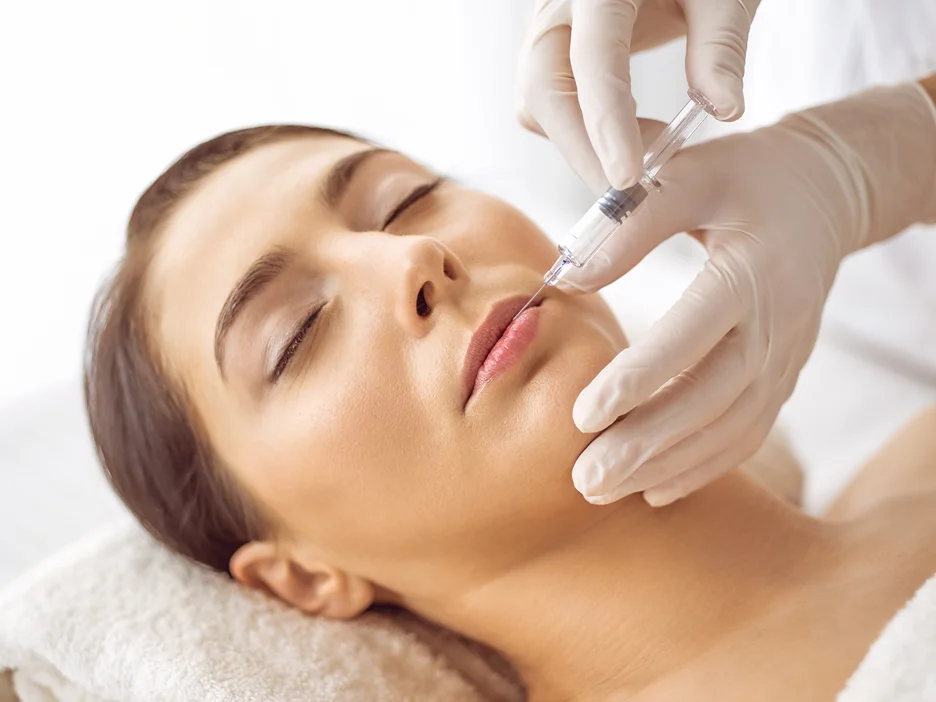
A dental block is a regional anesthesia technique that profoundly numbs the lips and surrounding areas for comfortable lip augmentation. It involves injecting lidocaine or similar local anesthetic near key nerves responsible for facial sensation.
Specifically, the dental block targets the infraorbital, mental, and dental nerves.
- The infraorbital block anesthetizes structures like the lower eyelid, nose, cheek, and upper lip served by the ipsilateral maxillary nerve.
- The mental nerve is blocked to numb the lower lip, chin, and lateral gingiva on one side.
- The dental nerve blockade handles tooth and gum anesthesia.
By anesthetizing these major nerve bundles, a dental block creates an expansive zone of numbing encompassing all lip regions. It offers unparalleled pain relief during injections through targeted nerve conduction blocks. Additional benefits include vasoconstriction lowering bruising risk and suiting sensitive patients requiring robust anesthesia.
Crucially, achieving a successful block relies on the practitioner’s injection proficiency near delicate nerves. Unless performed by a trained expert, there are risks of nerve trauma or inconsistent effects. Other lower face anesthesia options provide more localized relief like topical variants or local infiltration. However, a dental block remains a gold standard for lip augmentation comfort control.
Alternatives to Dental Block
While dental block is considered the gold standard, other options exist depending on individual needs and provider expertise. Topical anesthetics containing 4% lidocaine are convenient for surface-level numbing, though their effects are more superficial than blocks.
Regional nerve techniques like inferior alveolar or mental nerve blocks anesthetize broader lower facial territories than topicals alone. However, they require higher skill than dental blocks and carry greater injury risks if improperly administered.
Sedative premedication through oral anti-anxiety pills or intravenous agents helps some patients relax through reduced tension. This relaxation may lessen the perceived pain of injections.
Other injectable anesthetics like 0.5-1% lidocaine can infiltrate specific lip areas in lieu of more extensive blocks. These localized infiltrations suffice for minor procedures but often fall short of the profound anesthesia from well-placed dental blocks.
The appropriate choice depends on the planned complexity and goals of each case, provider expertise, and individual patient preferences weighing comfort and risks. Alternatives serve those unwilling or unsuitable for dental blocks while still prioritizing a smooth, pain-free lip augmentation experience.
Preparing for a Lip Filler Appointment
Thorough preparation begins with realistic expectations setting. A consultation thoroughly evaluates goals and assesses lip borders/facial harmony through photos. Common side effects like swelling, bruising, and tenderness are reviewed alongside rare risks like infection.
Patients should inform their provider of prescription medications especially blood thinners due to bleeding risks. Potential allergic reactions are screened for despite their infrequency. Understanding both immediate effects and longevity helps manage expectations of results’ duration.
Post-Treatment Care and Considerations
Post-procedure, any concerns necessitating contact with one’s practitioner are promptly addressed. Fillers effectively treat age-related mid-face deflation and lines like marionettes or parentheses over months.
Regular follow-ups allow adjustments ensuring lip augmentation’s continued benefit and aesthetics as natural volume shifts occur. Practitioners can devise customized long-term skincare plans factoring in individual aging. Addressing late-forming irregularities or transitioning to alternative techniques maintains a youthful yet natural appearance harmonized with one’s features over the years.
Establishing open provider communication from the start empowers patients to proactively steward their results. Combined with responsible post-care, natural yet defined lips satisfying goals can last far beyond any single treatment.
Find Your Best Lip Shape with Ethos Aesthetics + Wellness’s Specialists
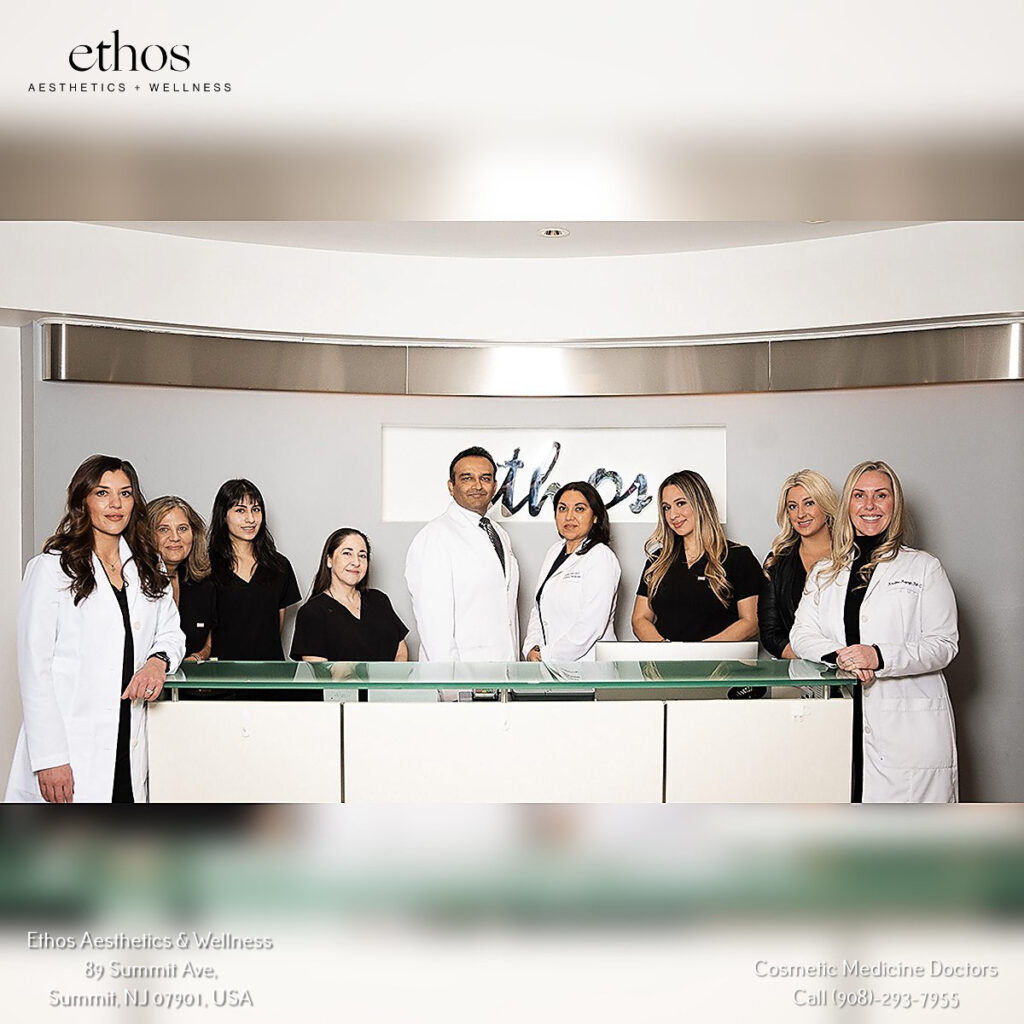
Now that you understand the ins and outs of lip augmentation procedures and anesthesia options, it’s time to take the next step to achieve your ideal pout. For the most accurate information tailored to your individual needs and goals, schedule a free consultation with the highly trained providers at Ethos Aesthetics + Wellness.
Our team of experienced specialists can address any questions you have in a caring, judgment-free environment. From determining whether you’re a good candidate and deciding on the right technique to shape your unique features, to safely administering anesthesia and sculpting natural-looking results, Ethos Spa Skin & Laser Center has the expertise to guide you every step of the way.
Whether you want a subtle enhancement or a bolder transformation, Ethos Spa Skin & Laser Center will work with you to design a personalized treatment plan within your budget and comfort levels. Don’t hesitate to book your consultation today and start enjoying fuller, younger-looking lips that boost your confidence today!

